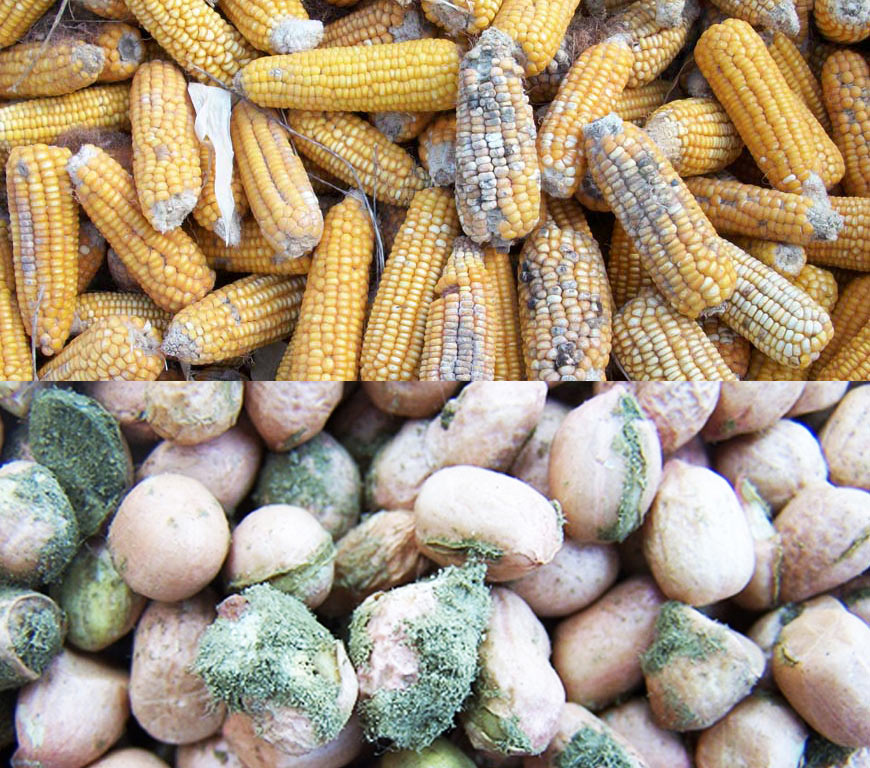
Aflatoxin is produced by several soil-borne fungi or molds. Aspergillus flavus, which often is shortened to A. flavus, produces aflatoxins, though the fungus doesn’t need to make the toxin to survive. Most strains of Aspergillus parasiticus and some strains of Aspergillus nomius and Aspergillus niger have been found to also produce aflatoxin.
These fungi are found throughout much of the world, especially in the tropics. The production of aflatoxin is not a requirement for the fungus to grow, reproduce and infect crops – which is why aflatoxin is considered a secondary metabolite. Scientists are trying to determine what role aflatoxin plays in the fungus, but it is believed that these compounds help the fungus survive during times of temperature and water stress.
However, the amount of aflatoxin the fungus produces varies wildly. Scientists continue to study why some strains of A. flavus are non-toxigenic and why the same strains produce very little toxin one year and deadly amounts another year.

